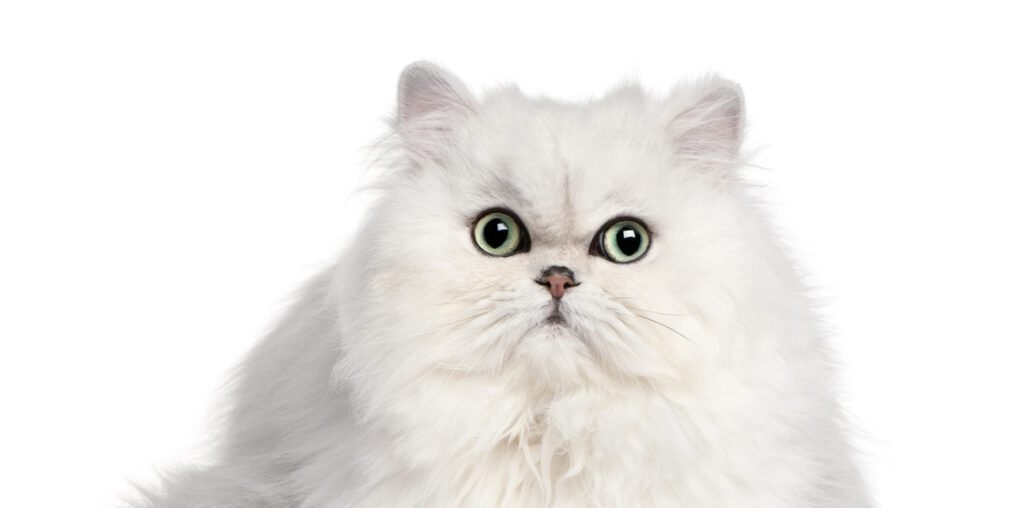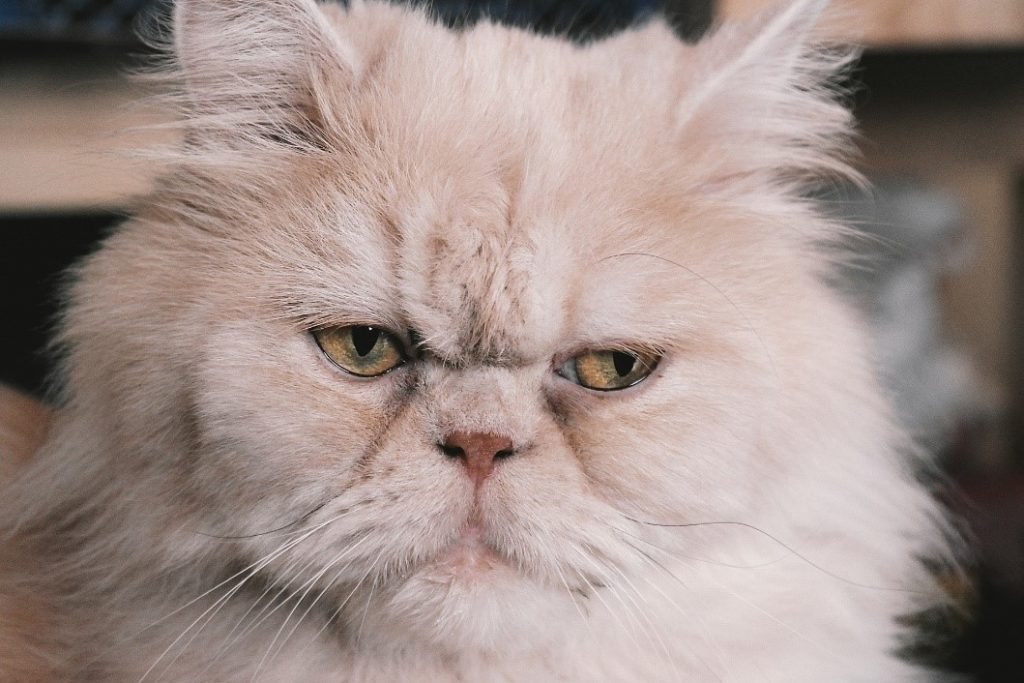Have you ever wondered if Persian cats can pose a threat? Well, in this article, we’ll explore whether these fluffy felines have a dangerous side. While Persian cats are known for their long luxurious coats and gentle demeanor, it’s important to consider the potential risks they may bring. From potential allergic reactions to their grooming needs, let’s uncover the truth about Persian cats and whether they can be considered dangerous at times.
Health Concerns
Breathing Issues
Persian cats are known for their unique facial structure, which can sometimes lead to breathing difficulties. The shortened snout and flat face can result in narrow nostrils and a small windpipe, making it harder for these cats to breathe properly. This can result in snoring, wheezing, and increased susceptibility to respiratory infections. It’s important to monitor your Persian cat closely for any signs of respiratory distress and seek veterinary attention if necessary.
Eye Problems
Another health concern commonly associated with Persian cats is eye problems. Their adorable and distinctive large eyes, while aesthetically pleasing, can be prone to certain issues. Persians are more susceptible to conditions such as cherry eye, entropion (inward rolling of the eyelids), and tear duct abnormalities. Regular eye examinations and proper eye care are essential to prevent and manage these issues, ensuring your Persian cat enjoys optimal eye health.
Obesity
Due to their sedentary nature and love for lounging, Persian cats are prone to obesity. These cats are not particularly active, and their long, luxurious coats often hide any signs of weight gain. Obesity can lead to various health problems, including joint issues, diabetes, and heart disease. It’s crucial to provide your Persian cat with a balanced diet, portion control, and regular exercise to maintain a healthy weight and prevent obesity-related complications.
Temperament
Gentle and Affectionate
Persian cats are well-known for their gentle and affectionate nature. They are often described as loving and sweet companions who enjoy being in your company. These cats have a calm and mellow temperament, making them great pets for individuals of all ages. They thrive on attention and make wonderful lap cats, always ready to curl up next to you for some quality cuddle time.
Reserved and Independent
While Persian cats are generally friendly and affectionate, they can also exhibit reserved and independent behaviors. These cats value their personal space and may require some time to warm up to new people or unfamiliar environments. It’s important to respect their boundaries and provide them with quiet places to retreat to when they desire some alone time.
Playful and Curious
Contrary to popular belief, Persian cats can also be playful and curious creatures. While they may not have the same energy levels as some other cat breeds, they still enjoy engaging in interactive play sessions. Introducing puzzle toys, feather wands, or laser pointers can stimulate their curiosity and keep them mentally and physically active.


This image is property of www.rvc.ac.uk.
Potential for Aggression
Rare Occurrences
In general, Persian cats are not known for displaying aggressive behavior. They are known for their gentle and easygoing nature, making them ideal pets for families and individuals seeking a relaxed and peaceful companion. However, it’s important to remember that every cat is an individual, and rare occurrences of aggression can still happen.
Triggers for Aggression
Aggression in Persian cats can occur due to various triggers, such as fear, pain, or territorial instincts. It’s essential to provide a secure and calm environment for your cat, minimizing any potential sources of stress or anxiety. Proper socialization from a young age can also help prevent aggressive tendencies and ensure your Persian cat grows up to be well-adjusted and non-aggressive.
Preventing Aggression
To prevent aggression in Persian cats, it’s crucial to understand their needs and provide appropriate outlets for their natural behaviors. Ensuring they have enough mental and physical stimulation through play, enrichment activities, and interaction with their human family members can help reduce the likelihood of aggressive behaviors. Additionally, gentle and positive reinforcement training techniques can be used to discourage any inappropriate aggression.
Allergenic Reactions
Persian Cats and Allergies
While Persian cats are not completely hypoallergenic, they are often considered a better option for individuals with allergies compared to some other cat breeds. This is due to their longer coat, which tends to trap more allergens, such as dander, and prevent them from becoming airborne. However, it’s important to note that each person’s sensitivity to allergens may vary, and some individuals may still experience allergic reactions to Persian cats.
Managing Allergies
If you or a family member have allergies but still want to bring a Persian cat into your home, there are steps you can take to manage the allergies effectively. Regular grooming, including brushing and bathing, can help reduce the amount of loose hair and dander in the environment. Using air purifiers, frequent vacuuming, and keeping the living space well-ventilated can also aid in minimizing allergic reactions. Additionally, consulting with an allergist and following their recommendations can ensure a better understanding of your specific allergies and how best to manage them.


This image is property of geniusvets.s3.amazonaws.com.
Grooming Challenges
Long and Dense Coat
One of the defining characteristics of Persian cats is their long and dense coat. While their beautiful fur adds to their charm, it also requires regular and thorough grooming to keep it in the best condition. The coat can become easily tangled and matted if not properly maintained, leading to discomfort and potential skin issues. Regular brushing and combing, ideally on a daily basis, are essential to prevent matting and keep the coat healthy and shiny.
Daily Care Requirements
In addition to brushing and combing, Persian cats also require daily care for their eyes, ears, and nails. Their eyes are prone to tear stains, which need to be cleaned regularly using a damp cloth or specialized tear stain remover. Ears should be checked for any signs of wax buildup or infections, gently cleaned if necessary, and nails should be trimmed regularly to prevent overgrowth and discomfort. Establishing a consistent grooming routine from the early stages will help your Persian cat become accustomed to the process.
Potential for Skin Issues
Due to their dense coat and potential for matting, Persian cats are also at a higher risk of developing skin issues. The accumulation of dirt, oil, and debris close to the skin can lead to bacterial or fungal infections if not properly addressed. Regular bathing, using cat-friendly shampoos, can help keep the skin clean and prevent any potential problems. It’s important to choose grooming products specifically designed for cats and consult with a veterinarian if you notice any unusual skin changes or irritations.
Exercise and Activity Needs
Sedentary Lifestyle
Persian cats are generally less active compared to some other cat breeds. They are content with a calm and peaceful lifestyle, often spending their days lounging or observing their surroundings. While they may not have high exercise requirements, it’s still crucial to provide them with opportunities for physical activity to maintain a healthy weight and overall well-being.
Promoting Exercise
To promote exercise in Persian cats, engaging in interactive play sessions is key. This can involve using toys that mimic prey-like movements or chasing strings and laser pointers. Regular playtime not only helps keep your Persian cat physically active but also stimulates their minds, preventing boredom and ensuring they have a fulfilled and enriched life.
Environmental Enrichment
In addition to play sessions, it’s important to provide environmental enrichment for your Persian cat. This can include providing scratching posts, climbing structures, puzzle toys, and window perches to offer different opportunities for exploration and mental stimulation. Creating a safe and engaging indoor environment will help prevent behavioral issues and keep your Persian cat entertained and happy.


This image is property of www.aaha.org.
Household Hazards
Access to Harmful Substances
Like any other cat, Persian cats can be curious and may investigate their surroundings. It’s important to ensure that they are not exposed to harmful substances such as toxic plants, cleaning chemicals, or human medications. Store these items securely and out of reach, and be cautious when using potential hazards in your home to prevent accidental ingestion or exposure.
Dangerous Objects and Plants
Sharp objects, such as needles, small toys, or fragile items, should also be kept out of your Persian cat’s reach to prevent injuries. Additionally, some common houseplants can be toxic to cats if ingested. Research plants thoroughly before bringing them into your home and remove any toxic varieties from your cat’s environment.
Preventing Accidents
To prevent accidents, it’s important to create a safe and cat-friendly environment. This includes removing small objects that could be swallowed, securing loose cords or blinds that may pose a strangulation hazard, and using childproof latches on cabinets to prevent access to potentially dangerous items. Regularly inspecting your home for potential hazards and making appropriate adjustments can help keep your Persian cat safe from accidents.
Handling and Socialization
Delicate Handling Requirements
Persian cats have a delicate nature and may require gentle and careful handling. Their long, flowing coats can easily tangle, so they should be held with extra care to avoid pulling or causing discomfort. Supporting their entire body and cradling them securely can help ensure their safety during handling.
Interaction with Children and Pets
When it comes to interacting with children and other pets, Persian cats generally do well. Their calm temperament makes them suitable companions for families with well-behaved children and other animals. However, it’s crucial to supervise interactions between your Persian cat and young children to prevent unintentional harm, such as pulling on the cat’s fur or tail. Introducing new pets gradually and under controlled circumstances can also help ensure a harmonious coexistence.
Importance of Early Socialization
Early socialization is essential for Persian cats to develop into well-adjusted and sociable adults. Introduce your cat to various people, sounds, and environments from a young age to familiarize them with different stimuli and build their confidence. This will help prevent fear-based behaviors and ensure a friendly and sociable personality as they grow older.


This image is property of www.tamaracvet.com.
Responsibilities of Ownership
Financial Considerations
Owning a Persian cat comes with certain financial responsibilities. These include the costs associated with routine veterinary care, vaccinations, grooming supplies, and high-quality cat food. Additionally, unexpected veterinary expenses may arise, so it’s important to have a financial plan in place to ensure you can provide the necessary care for your Persian cat throughout their life.
Time Commitment
Another aspect to consider before adopting a Persian cat is the time commitment required. Their long coats require daily grooming, and regular veterinary check-ups and vaccinations are necessary to maintain their health. Spending quality time with your Persian cat, engaging in play and enrichment activities, is also important for their overall well-being. Make sure you have the time and dedication to devote to caring for a Persian cat before bringing one into your home.
Veterinary Care
Regular veterinary care is crucial to keep your Persian cat healthy and prevent any potential health issues. This includes vaccinations, routine examinations, parasite prevention, and dental care. It’s important to establish a relationship with a trusted veterinarian who has experience with Persian cats, as they may have specific breed-related health concerns that require specialized attention.
Conclusion
Understanding Persian cats and their unique characteristics is essential for responsible ownership. These intelligent and affectionate companions can bring joy to your life, but it’s important to be aware of their specific needs and potential health concerns. From addressing their grooming challenges to providing them with a suitable environment and socialization, responsible ownership ensures a happy and fulfilling life for your Persian cat.


This image is property of www.petsittersireland.com.
